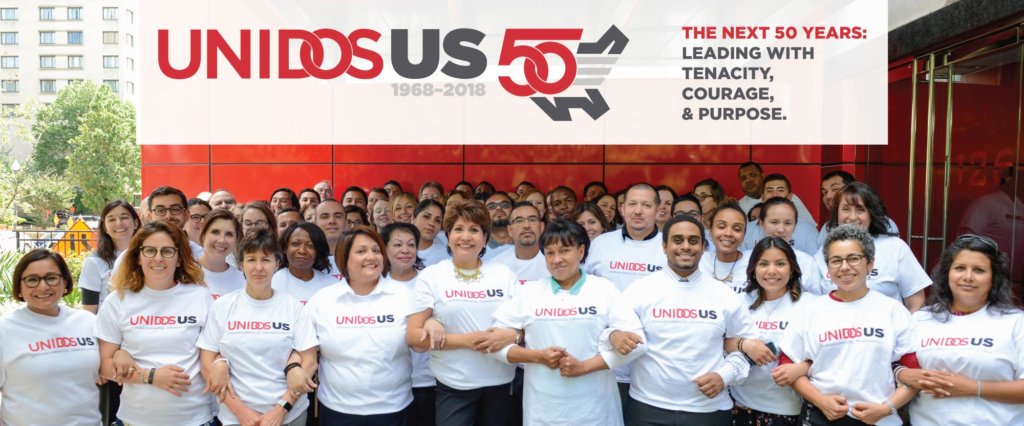No State Makes the Grade When It Comes to Latino College Enrollment, According to New Report by The Education Trust

The United States’ Latino student population is growing and expanding all across the country but a new report from the educational research group The Education Trust (Ed Trust) says not one state makes the grade when it comes to helping them enroll in and graduate from public colleges and universities.
“As tax-exempt, taxpayer-supported entities, U.S. public colleges and universities should advance the public interest by ensuring all U.S. residents—regardless of race or ethnicity—have a legitimate opportunity to earn a college education,” begins the report Broken Mirrors II: Latino Student Representation at Public State Colleges and Universities. It follows a report released last year exploring the nationwide college enrollment and graduation rate gap between White and Black students.
“As our economy becomes more reliant on a college-educated workforce, failure to improve college attainment for Latinos will threaten the nation’s economic security and competitiveness,” the report adds.
“Overall, states have a lot of work to do to enroll and graduate Latinos—both at community and technical colleges and at four-year public colleges and universities—in numbers that are proportional to their statewide population,” says Will Del Pilar, one of the report’s authors. “States should pay special attention to Latino enrollment in and graduation from public four-year colleges and universities, which typically provide students the surest path to the middle class and graduate Latinos on-time at higher rates than community colleges.”
The Ed Trust research team used public census and federal higher education from 44 states to ask the following questions:
1) How does the enrollment of Latino undergraduates at public community and technical colleges in each state compare to the state’s share of residents (ages 18 to 49 with no college degree who are Latino?
2) How does the enrollment of Latino undergraduates at four-year postsecondary institutions in each state compare to the state’s share of residents (ages 18 to 19 with a high school diploma and no bachelor’s degree) who are Latino?
3) Do Latino and White students have equal access to selective public four-year institutions in each state?
4) How does the share of Latino associate degree earners at public postsecondary institutions in each state compare to the state’s share or residents (ages 18 to 49 with no college degree who are Latino?
5) How does the share of Latino bachelor’s degree earners at public postsecondary institutions in each state compare to the state’s shear of residents (ages 18 to 49 with a high school diploma and no bachelor’s degree) who are Latino?
6) Are Latino and White graduates awarded similar shares of bachelor’s degrees from public institutions in their state?

Through that research, the report found that Latinos are underrepresented at community and technical colleges in about 90% of states examined, while Latino enrollment at four-year public colleges is not on par with the number of Latino residents in 75% of the states. That was even true California, Florida, Texas, and New York, the states with the largest number of Latinos. However, California, Texas, and Florida saw above-state-average enrollment for Latinos at community and technical colleges in comparison to the share of Latino residents, with Florida taking the lead. At the four-year level, the states with the largest Latino enrollment in public colleges and universities, compared with their state population, were Kentucky, Iowa, Florida, Arkansas, and New York. When it comes to the racial and ethnic composition of recent college graduates, the states with the highest share of associate degrees going to Latinos are Florida, Texas, New Mexico, New York, and California, while both Florida and New Mexico—the state with the largest percentage of Latinos in its population—ranked the highest for the share of bachelor’s degrees from public colleges going to Latinos.

To help achieve that, the report created a list of 11 questions post and state secondary education leaders and advocates should ask. And in its conclusion, it stated, “our findings show that, with few exceptions, Latino representation in public colleges and universities is anything but a mirror image of states’ racial and ethnic composition.”
The results prompted many Latino civil rights leaders to publicly analyze these systematic discrepancies. For example, Sindy Benavides, Chief Executive Officer of the League of United Latin American Citizens (LULAC), said in a press statement that one of the best ways to improve these scores would be to make Pell grants and other federal financial assistance available to all residents, regardless of their immigration status.
“Universal and quality public education, from early learning through college, is the foundation for lifelong success,” she stated.
UnidosUS President and CEO Janet Murguía noted that Latinos will represent nearly 30% of the school-aged population by the year 2013.
“The vast majority of those students want to go onto college once they finish high school, and they all deserve the chance to earn a high-quality college degree. New research from Ed Trust shows that, in nearly every state, our public colleges and universities have a lot of work to do to provide equitable college access for Latinos. Our nation’s diversity is our strength. State leaders should make college access and success for Latinos a top priority, and Congress must invest in students of color.”



